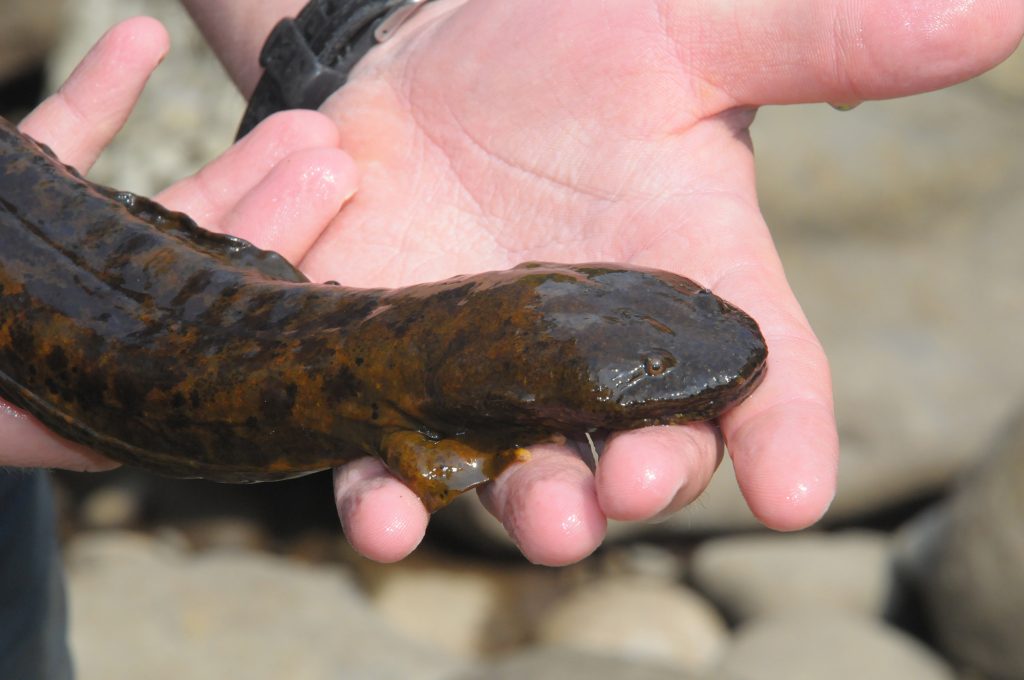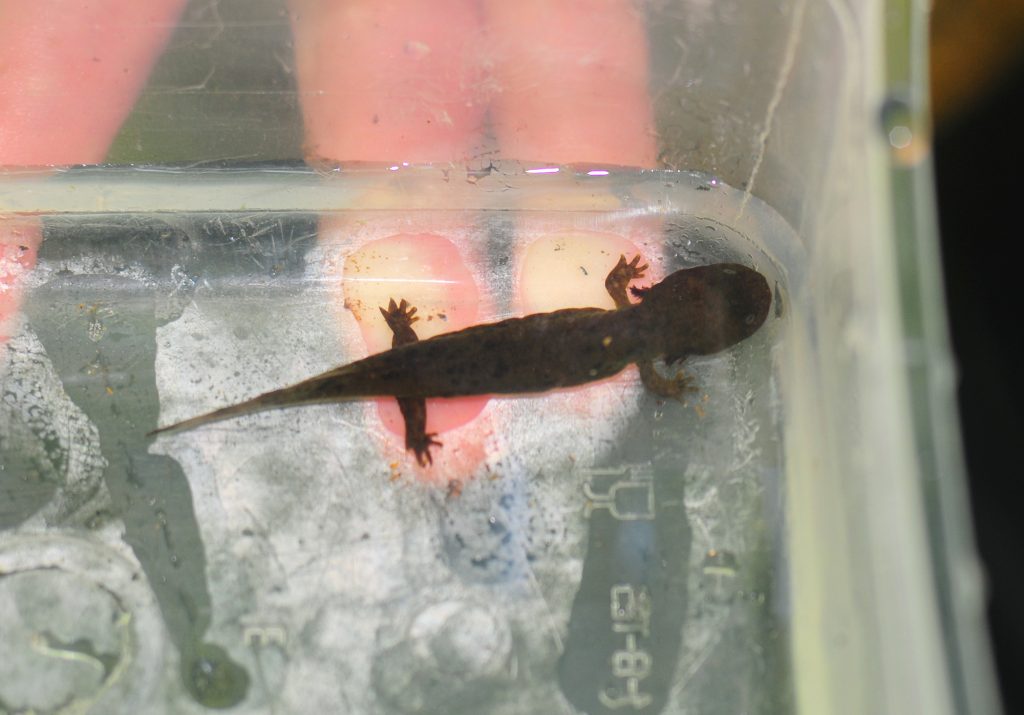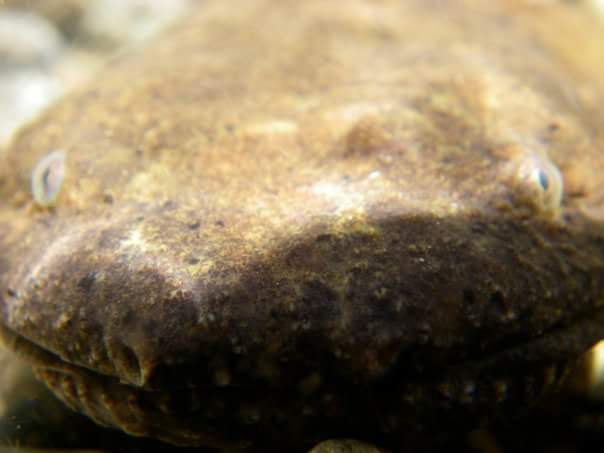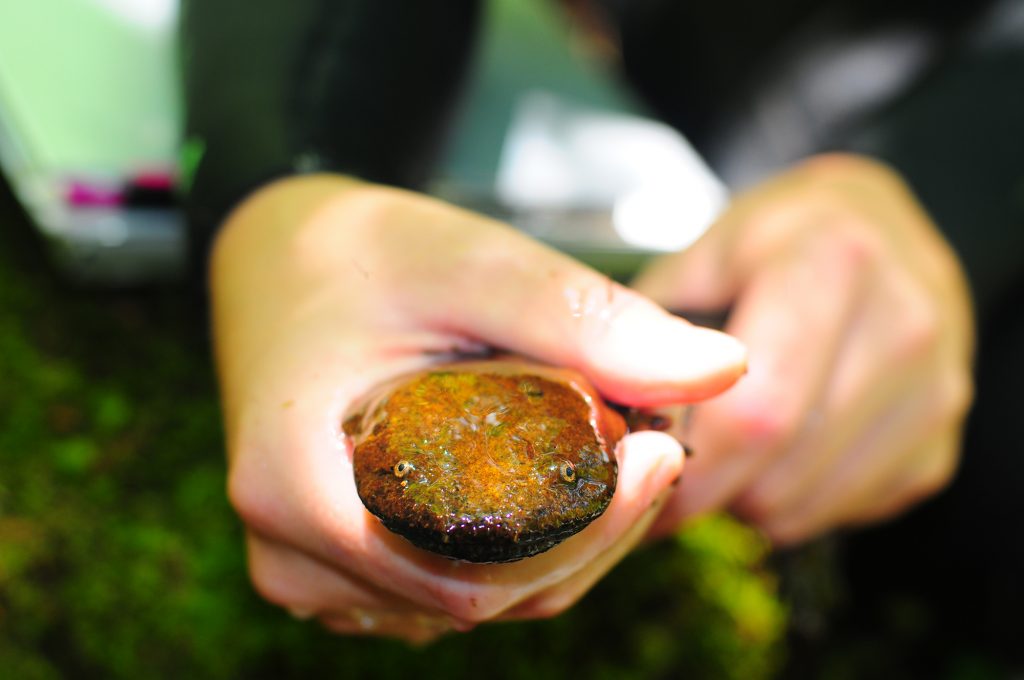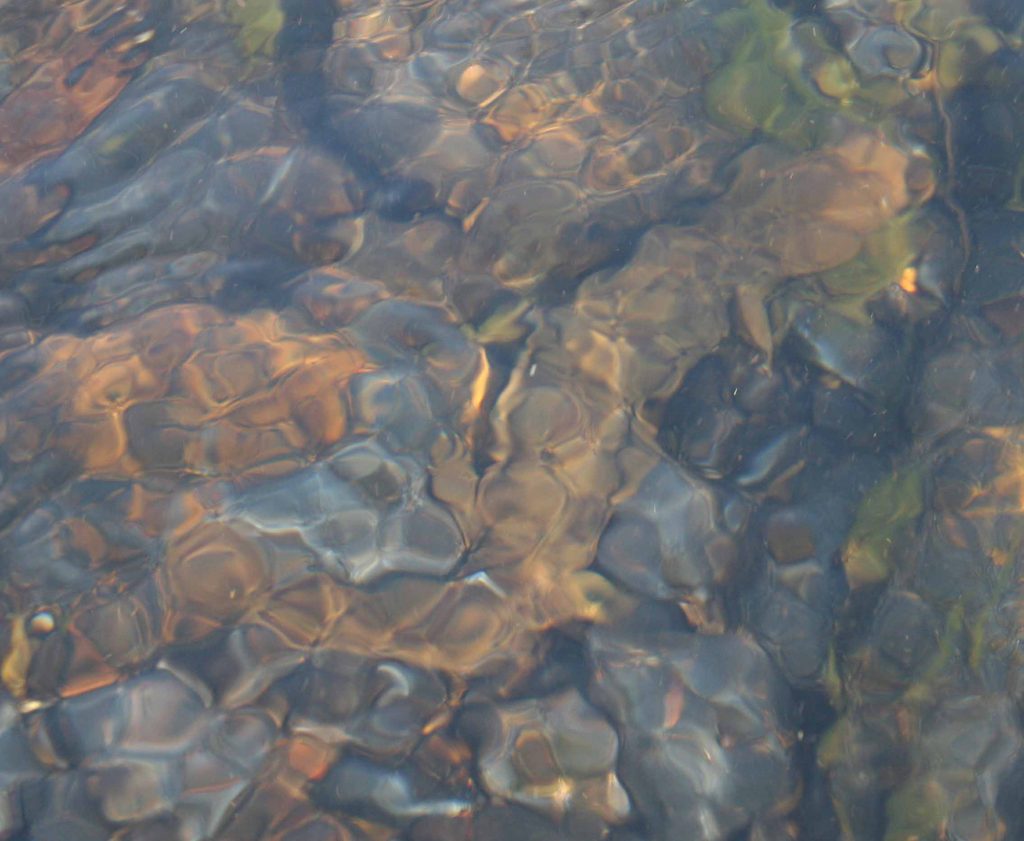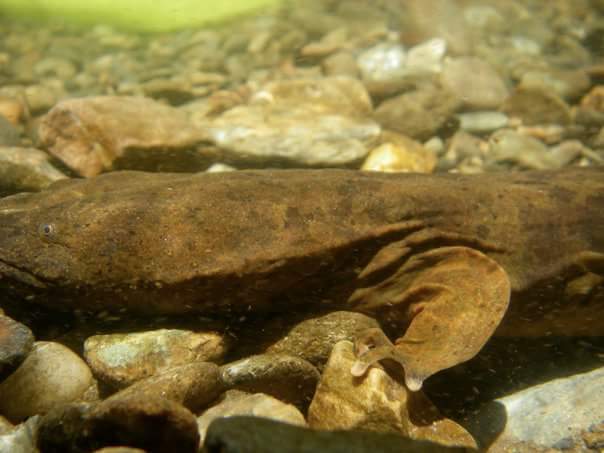Juvenile hellbenders have a different diet than adults, a finding that could help improve conservation efforts of the giant aquatic salamanders. A study of diet samples from young hellbenders, taken non-lethally, showed they mostly eat mayfly and caddisfly nymphs. Adult hellbenders, in contrast, primarily feed on fish and crayfish.
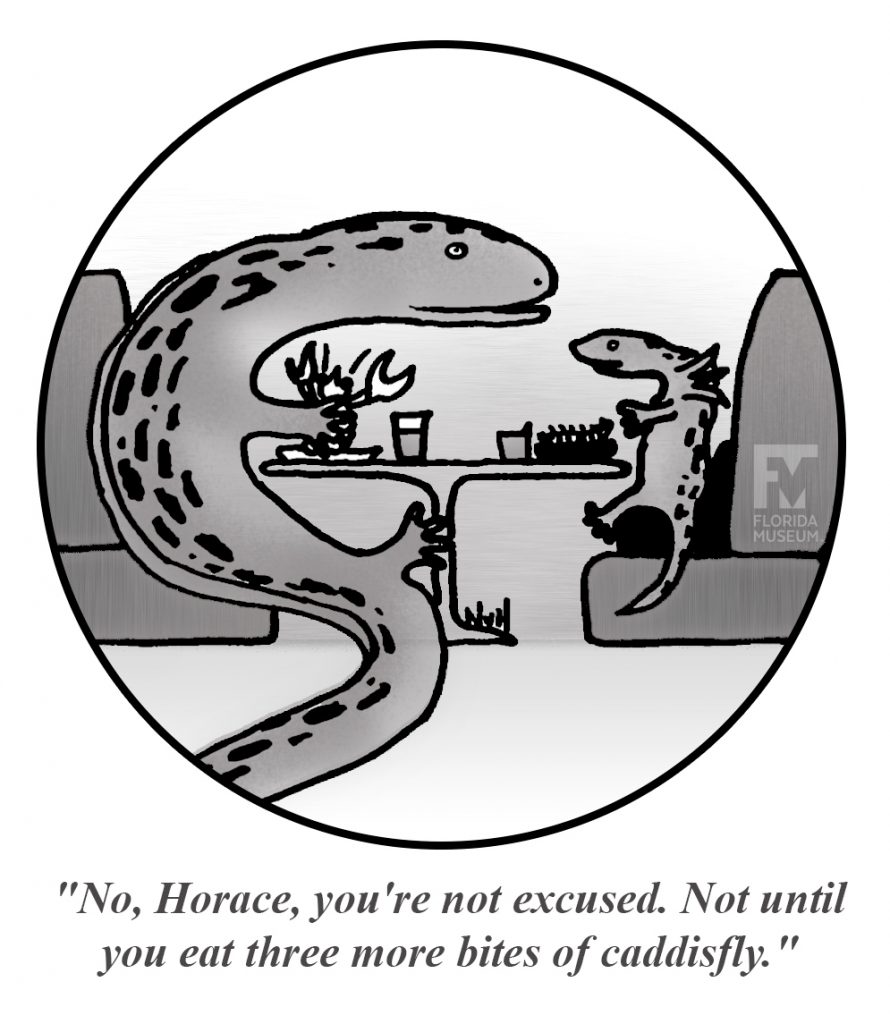 Factoring aquatic insect populations into future conservation strategies could be vital to supporting the next generation of hellbenders, which are on the decline in the U.S. due to pollution, disease and habitat loss and degradation, said Kirsten Hecht, a doctoral student at the Museum and first author of the study.
Factoring aquatic insect populations into future conservation strategies could be vital to supporting the next generation of hellbenders, which are on the decline in the U.S. due to pollution, disease and habitat loss and degradation, said Kirsten Hecht, a doctoral student at the Museum and first author of the study.
“Researchers know almost nothing about the behavior and habitat of wild larval hellbenders. Past hellbender conservation efforts have mostly focused on what we know about adults,” she said. “This paper will broaden the way we look at the needs of hellbenders, particularly as researchers and managers look to improve habitat and stabilize populations of this incredible salamander.”
Authors: Kirsten A. Hecht (kirstenhecht@ufl.edu), Max A. Nickerson and Phillip B. Colclough (Zoo Knoxville)
Abstract:
Organisms in lotic habitats often experience dietary shifts over their lifetime. The diet of adult Cryptobranchus alleganiensis (hellbender) is well studied throughout the species’ range, but knowledge regarding the natural history of larval hellbenders, including dietary information, remains scarce. We obtained non-lethal diet samples from 23 larval hellbenders. Larval hellbenders consumed primarily invertebrate prey including mayfly (Ephemeroptera) and caddisfly (Trichoptera) nymphs. Since these items do not comprise a large proportion of the adult diet, hellbenders may undergo an ontogenetic dietary shift. Therefore, future management and conservation decisions regarding the hellbender should consider the abundance and density of aquatic insect populations.
Read the full paper in Southeastern Naturalist.
Learn more about the Herpetology Collection at the Florida Museum.
